Best Microphone Under $100 | USB & XLR Condenser Mics
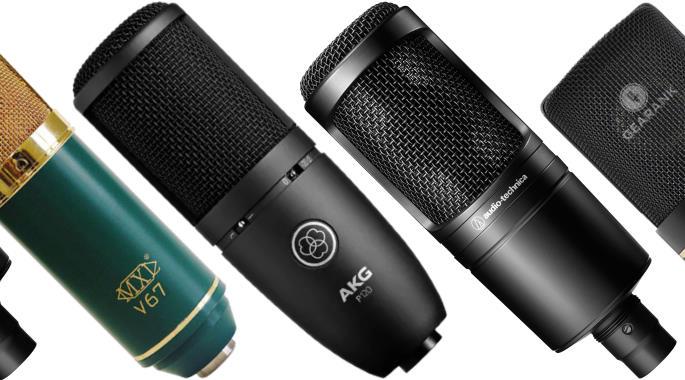
The Best XLR Condenser Microphone Under $100
These are the best condenser mics that use a traditional XLR connection. Condenser Microphones require phantom power to operate. They use internal circuitry for the diaphragm to function and send signals. . Most modern preamps, mixing consoles, and USB adapters provide phantom power.
AKG P120
Cons
- Back sound rejection still picks up a bit of background noise
- Can pick up lots of mids and reverb in an untreated room
Pros
- Handles low-mid frequencies when recording a 4x12 cabinet
- Sound quality is VERY good for small studio for voice-over work
- It gives a fairly pleasant tone to most sources, and it sounds good on soft-spoken vocals
- The built-in optional low cut and -20dB for very loud sound sources
For the best budget condenser mic, the AKG P120 Large-diaphragm condenser microphone is the youngest brother AKG line. It’s made of solid metal and is a bit on the heavier side at 1 lbs, almost shy of Neumann U87’s 1.1 lbs. It feels well-constructed for a $99 price point.
You get a bass roll-off so you can cut the low frequencies starting at 300Hz. For really loud sound sources, you have a 20dB pad switch.
If there’s one line to describe how it sounds, “It’s a mic that can cut through the mix with a decent warm tone and crisp highs.”
Vocal recordings fit like a glove with this mic because it captures the body quite well. Mid frequencies aren’t too overpowering, delivering you a good tonal balance that fits both sung and spoken word audio recordings.
I find chesty, belted vocals shine with this mic. Mid-heavy but crisp voiceovers sound smooth. However, people with soft and sultry voices can also benefit as well.
This XLR condenser microphone also captures acoustic guitars in full spectrum, and it doesn’t sound as if some frequencies are missing in the lows. Recording cabs are also a treat, and you can drive your amp loud without clipping. You could always turn it down to 20dB and capture the sweet spot of your cab.
Its cardioid polar pattern is a bit more isolating. It still sounds good when producing gang vocals at different distances, about 1-3 feet away, where the proximity effect is needed to create a sense of space.
Even though it has a fixed cardioid polar pattern, the back rejection might need some improvement. It’s best to put this mic in an acoustically treated studio to benefit from it.
For music production and VO, the AKG p120 certainly delivers. It’s a the top of our list for a reason. It's best microphone for under 100 with switchable roll-off and 20dB pad making it a really versatile tool. You’re getting more than what you're paying for with this mic.
Specifications
- Type: Condenser
- Polar Pattern: Cardioid
- Frequency Response: 20Hz-20kHz
- Impedance: 200 ohms
- Max SPL: 130dB, 150dB w/Pad
- Applications: Recording instruments, Singing, Voiceovers, Podcasts
- Power Requirements: +48V phantom power
Shure PGA181
Cons
- A bit heavy. May tip over light mic stands
- Not the widest frequency range
Pros
- Great value
- Very durable
- Versatile enough for voice and instruments
- Surprisingly good as a room mic for orchestras
In the world of microphones, versatility is a coveted trait. The Shure PGA181, a side-address cardioid condenser microphone, embodies this adaptability.
Unlike the standard top-address microphones like the popular SM57, the PGA181 challenges convention by accommodating even unconventional placements. This microphone dares to dangle in front of a guitar cabinet, a feat rarely recommended by experts in the field.
A significant highlight of the PGA181 is its remarkable maximum SPL of 138dB, allowing it to tackle even the most ear-shattering sound sources without breaking a sweat.
Frequently referred to as the "desert island microphone" in forums and reviews, the PGA181 earns its reputation. Its frequency response is not just clear and even but versatile enough to excel in many scenarios, from capturing captivating vocals to delicately handling orchestral percussion.
However, like any versatile generalist, it can't be a master of all trades. Some reviews label it as a "Jack-of-all-trades, master of none."
Additionally, its relatively weighty build may pose a challenge for certain microphone stands, as users have reported difficulties with their boom arms adequately supporting the microphone. This minor setback can be readily resolved using a sturdy and reliable microphone stand.
The Shure PGA181 is a reliable and versatile microphone, ideal for anyone embarking on music production projects. If you're seeking your first microphone to kickstart your musical journey, the PGA181 is a fantastic choice to get the ball rolling.
Specifications
- Frequency Response: 50Hz-20kHz
- Polar Pattern: Cardioid
- Max SPL: 138dB
- Power Requirements: Phantom Power 48V (+/- 4V)
- Best For: Vocal recording, Instruments, Percussion, Amplifiers
| Website | Source | *Rating Value |
| MusicRadar | Tom Bradley | 100/100 |
Audio-Technica AT2020 - Best Budget Microphone for Vocals
Cons
- Can sound sibilant on some sources
- Very sensitive to mouth noise (clicks and plosives)
- Some issues with self-noise
Pros
- Smooth response and great transient handling
- Subtly bright sound great for female vocals
- Solid build and reliability
- Very usable and professional sound on vocals and instruments
"Often imitated, never duplicated" is an adage that applies to the Audio Technica AT2020. It is Audio-Technica's offering for the lower-priced segment. But it still offers much of Audio-Technica's signature sound, build quality, and reliability.
It has a smaller 16mm-diameter back-electret capsule. This gives it a subtly bright sound that complements female vocals, although it works fine on male vocals too. Truly, it makes it one of the best microphone for recording vocals out there at an affordable price.
It's also a solid entry-level mic for recording acoustic guitars. It's good at reproducing the high-frequency zing of spruce top acoustics.
The Audio Technica AT2020 is the best budget XLR microphone for singing. It does well with delicate-sounding female vocals thanks to its smooth response and great transient handling. With belted or distorted vocals, I noticed that this best cheap condenser mic does add a degree of presence and brilliance.
It is a great entry point to the Audio-Technica "sound". This cheap condenser microphone is also a great value, delivering a very usable and professional sound on vocals and instruments. I can attest to this mic's solid build and reliability. These alone make it a top contending best microphone for under 100.
This mic might not include a cable or stand extension. We found that some retailers may use photos that show the mic on a stand with a cable. It is best to check the specifications to see if you are buying a bundle or just the microphone. Performance-wise, it has some self-noise and is not the quietest microphone. Also, it can be sensitive to plosives and sound a bit sibilant on some sound sources. Production-wise, I do find myself tamping down the high end just a bit so that it doesn't sound too harsh.
Due to its popularity, the AT2020 is often the target of counterfeiting. To avoid this, order only from reputable sellers/distributors.
The Audio Technica AT2020 is one of the best condenser mics on a budget. It's also one of the best XLR mic for streaming. Some bigger Youtube content creators like penguinz0 use it to record their voiceovers.
The Audio Technica AT2020 is also capable of handling many scenarios, from vocals to percussion to streaming. It's no fluke that top hits can be made with its high-quality sound. Just be sure to get one from a major retailer to ensure you get the real thing!
Specifications
- Frequency Response: 20Hz-20kHz
- Diaphragm Size: 0.63" / 16mm
- Polar Pattern: Cardioid
- Max SPL: 144dB
- Power Requirements: Phantom Power 48V (+/- 4V)
- Best For: Voiceovers / Vocal recording, Instruments, Podcast / Streaming
| Website | Source | *Rating Value |
| Sound On Sound | Paul White | 90/100 |
| Gearspace | Tom Higgins | 85/100 |
MXL V67G - Best Mic for Voice Over
Cons
- Sounds sibilant and too airy - not great for distorted guitars
- Does not come with a shockmount or pop filter
Pros
- Rich, low-frequency presence that's not bloated in any way
- Vintage sounding, relaxed upper midrange usually found in higher-end condenser microphones of German and Austrian origin
- Adds body and harmonic richness to lighter female vocals without sounding brittle
My experience with the MXL V67G comes from my need for an affordable XLR Condenser mic to use for deeper voices. Being a baritone myself, I found that the mic I was using at the time, an Audio Technica AT2020 felt like it was thinning out my voice too much.
Budget constraints were a big concern for me. I needed a mic that did not take away from the depth of my voice while still being able to present higher frequencies naturally.
The V67G is a vintage-sounding microphone. Its sound quality can be described as warm and smooth low frequencies with a relaxed upper midrange. This type of sound signature is usually seen in higher-end condenser microphones of German and Austrian origin.
I've been a big fan of mics inspired by the U87 so when I read that the circuitry was partly influenced by that mic, I knew I had to try it out.
The V67G has a rich, low-frequency presence that's not bloated in any way. To offset this, there is a slight dip at the midrange, which is a good thing in this case as it prevents excess nasality in my tone. Even with the midrange pulled back, it was harmonically rich enough not to sound hollow or brittle as is the case with other cheaper condenser mics. I have used this microphone to record other vocal types as well. It does a good job of adding body and richness to lighter female vocals.
The cardioid pattern helps with focusing the pickup point in front of the mic. This also has added proximity effect, which makes voices sound deeper as you get closer to the mic. On some mics, it sounds muddy but on the V67g, the effect has a pleasing "voice of god" radio effect.
For other instruments, the only thing I would record with it are acoustic guitars. For other types, I will discuss them below...
One common problem I encountered is excess sibilance. While the mic itself isn't brittle sounding, I often find the sound quality to be too airy. This also means that distorted electric guitars have too much sizzle on the top end. This conflicts with the range of the cymbals and other high-frequency rich elements in the mix.
It's a bit slim on the upper midrange but it helps give it a clear sounding capture of voices. It's best paired with warm preamps, so for those with Third Generation Focusrite interfaces, this mic sounds best with the "Air" feature off.
It also does not come with a shock mount or pop filter. MXL does offer a version of this mic called the Heritage Edition (link to Amazon) that comes with accessories and a case but for an added premium.
The V67G is one of the best condenser mics to start out with. It gives your vocal tracks a vintage tonality and provides polish straight from the raw tracks. This is a quality often associated with higher end mics like the AKG C414 XLS or Neumann TLM series (though not as refined and perfected). At this price, it's tough to beat. It's the best voice-over microphone you can get at this price. It is also the best microphone for audiobook narration.
The only time I would replace this would be if I get either of the aforementioned AKG or Neumann microphones. That should say enough about how much I love this mic.
Specifications
- Frequency Response: 30Hz - 20kHz
- Diaphragm Size: 1" / 25mm
- Polar Pattern: Cardioid
- Max SPL: 130 dB
- Power Requirements: Phantom Power 48V (+/- 4V)
- Best For: Voiceovers, Vocal recording, and Drum overheads / room mics
| Website | Source | *Rating Value |
| Gearank | Raphael Pulgar | 91/100 |
| Audiofanzine | goodbyebluesky | 80/100 |
| Gearspace | GL Respect Due | 96/100 |
The Best USB Condenser Microphones Under $100
These are cheap condenser mics that feature USB connectivity, meant for direct to computer recording. They can draw power and stream captured audio for direct recording.
They are ideal for musicians who are looking to set up a basic home studio without the need for a separate audio interface. USB condenser microphones are designed to run on lower power compared to regular condenser mics. This is usually reflected in a difference in their frequency range and dynamic range. The convenience of these microphones has given them great value for content creation and recording.
Pyle PDMIKT100 - Best Mic Under 100 with Accessories
Cons
- A bit too sensitive - off-axis rejection is not this mic's strong suit
Pros
- Clear and crisp sounding
- Lots of included accessories - comes with a desktop stand, USB cable, hard carrying case, shockmount, windscreen, and pop filter
If you didn't see the price right away, you would think the Pyle PDMIKT100 would be a higher end microphone with its included accessories and case. Here's why it's the best mic under 100 with accessories.
The PDMIKT100 is an affordable USB Microphone packaged with a stand, windscreen, shockmount, and pop filter.
It includes a handy carrying case for those who need a secure way to bring their recording setup anywhere.
I highly praise the package for all the contents included, like the mini mic stand and pop filter. The aluminum hard carrying case was also a welcome addition.
Audio quality-wise, I give the PDMIKT100 high points for its clarity and crispness. It's easy for condenser mics at this price to sound brittle or harsh. The PDMIKT100 manages to avoid that problem.
I found the mic a bit too sensitive as it picks up background noises, off-axis rejection is not this mic's strong suit especially when compared to a dynamic mic. But this is to be expected from cheap mics. Still, it has all the right attributes to be considered by many as the best budget microphone for PC.
This affordable USB mic is a perfect head-start for those who are seeking to start their own podcasts or video streaming.
When it comes to music production, it's efficacy will be much more dependent on the sound source. As mentioned, the Pyle PDMIKT100 tilts on the brighter side with a slightly noticeable bump on the mid range. It adds presence to vocals with a darker timbre.
If you need a great-sounding USB mic with all the accessories and a case included, the Pyle PDMINKT100 fits the bill at a competitive price. It's the best microphone for cheap and comes with everything you need to get started aside from an audio interface.
Specifications
- Frequency Response:18-21kHz
- Polar Pattern: Cardioid
- Max SPL: 96dB
- Power Requirements: 5V USB power
- Device / Operating System compatibility: Class - Compliant USB ,Windows XP, Vista, 7, 8, 10, Mac OS X, Linux
- Sampling Rate: up to 48KHz
- Bit Depth: 24-bit
- Best For: Home Vocal Recording, Podcasts, Content Creation, and Streaming
| Website | Source | *Rating Value |
| YouTube | expert island | 88/100 |
| YouTube | Silly Things I Buy | 92/100 |
FIFINE K690
Cons
- Not the best off-axis sound rejection - can pick up a lot of background noise
Pros
- Impressive implementation of multiple polar patterns including stereo
- Solid build quality and nice feeling knobs and switches
- Includes a built-in gain knob and zero latency direct monitoring straight from the mic via a headphone jack
- Good sound quality for the price
Versatility is often an either an afterthought or a compromise when it comes to USB mics. Bad implementation of multiple polar patterns often lead to subpar recording quality.
The FIFINE K690 stands out among many of the USB mics due to its successful implementation of multiple polar patterns, zero latency monitoring, as well as an external gain control. Consider this the swiss army knife of the best condenser mic under 100 for USBs.
The different polar patterns make it versatile enough to use with various instruments like acoustic guitar and drums. The stereo polar pattern even allows for binaural recordings. It is perfect for recording drums in a room or even binaural voice recording.
The stereo polar pattern is great on those sources too. For vocals, I was pleasantly surprised to find it does well beyond just voice-overs. Singing vocal captures are rich and not brittle in the high-end like many cheap condensers. The build quality was also a welcome surprise. The mic feels solid to the touch, and the knobs and switches feel high quality.
Like the Pyle PDMIKT 100, the mic picks up a bit too much background noise. A condenser mic is more sensitive than a dynamic microphone. But I was hoping for a bit more off-axis sound rejection from the Fifine K690.
The FIFINE K690 brings a lot to the table for the price. While not coming from an as established of a brand as, say, Blue Microphones or Rode, its multiple polar pattern implementation and overall strong suits earn it a place in our top picks. Its versatility, build quality, and great sound quality are beyond its asking price. It's a great recording mic for laptop users.
Specifications
- Frequency Response: 40-20kHz
- Polar Pattern: Cardioid/Omnidirectional/Bi-directional/Stereo
- Max SPL: 130dB
- Power Requirements: 5V USB power
- Device / Operating System compatibility: Class - Compliant USB ,Windows 10, Mac OS 10.10 or higher with USB 2.0
- Sampling Rate: 48kHz
- Bit Depth: 16 bit
- Best For: Home Recording (Vocals and Instruments), Podcasts, Content Creation, and Streaming
| Website | Source | *Rating Value |
| Richard Tech | Editor | 80/100 |
| Youtube | Caleb Thornton | 88/100 |
Things to Consider When Buying a Budget Condenser Mic
If you're not overly familiar with budget condenser microphones, then have a read below to help you decide which mic to get.
-
Condenser mics often come with large diaphragms and capture more detail from the sound source. They also work well with different instruments.
Dynamic mics are more capable of handling high SPL (Sound Pressure Level) applications like miking drum kits, wind instruments, or guitar amplifiers. But small diaphragm condenser mics can also do a good job. Small diaphragm cardioid mics are ideal for high SPL applications because they can withstand loud volumes. Large-diaphragm mics reproduce more detail but may also capture unwanted reflections and distort when the diaphragm is overloaded with levels beyond the mic's rated maximum SPL.
Recently, "Medium diaphragm mics" have been getting more popular. These are usually found on compact designs or USB Condenser mics. They usually have less low-frequency extension than large diaphragm condensers but offer a more compact silhouette. This is useful for screen visibility during streaming or for reading scripts and lyric sheets.
In most microphone literature, Large diaphragms are 1" or more in diameter, while Small diaphragms are 0.5" or less. It's a good rule of thumb, but this usually varies depending on the manufacturer. There are Large Diaphragm Condensers with capsules measuring less than 1". Some manufacturers base their measurements on the entire capsule which in most cases means that some listed at above 1".
If that feels too confusing, often diaphragm size is usually determined by how the mic is constructed. Small Diaphragm Condensers are usually slim and are end-addressed while most Large Diaphragm Condensers are, as the name suggests, larger and are usually side-addressed.
-
For single instrument and vocal recording, the Cardioid polar pattern is ideal because of its noise reduction capability. This pattern captures everything in front of the capsule and rejects background noise from the back and sides. Omnidirectional and Figure-8 patterns are useful for capturing multiple instruments and sound sources. This also means that background noise can seep in, so consider proper placement and the acoustics of the location first. Some budget microphones come with polar pattern switching, allowing you to switch between Cardioid, Omnidirectional, Figure-8, and more. These versatile mics give you more value for your money, but because of the moving parts required, they are more fragile.
For more detailed information, along with diagrams to help your understanding, take a look at this.
-
The biggest considerations between going for XLR vs USB are convenience and upgrading. Having a USB condenser is more convenient since you won't need XLR cables and an audio interface to get started. This is great for those who are on the go or those who want a minimal setup. The downside is that in order to upgrade, you will need to buy a new USB mic. You won't be able to use hardware processors / vocal effects with a USB mic.
Though XLR mics inevitably require an interface and XLR Cables, they are more flexible with regard to routing and upgrade paths. Most XLR condenser mics outperform similarly priced USB mics as well. If you have plans to upgrade your studio in the future, there are no barriers to that when you use an XLR mic. Just make sure you pair your mic with the best xlr cable.
USB mics draw their power from your computer or tablet. This can sometimes cause problems if your device can't supply enough power (a common issue on the iPad). USB ports on the front of many computers have less voltage and current than ports directly connected to the motherboard. Insufficient or inconsistent power may cause malfunctions or damage. This can also cause your device's battery to be drained. If this happens, you'll need a powered USB hub.
XLR condenser mics take their electricity from phantom power, usually supplied by mixing desks, audio interfaces or standalone mic preamps and channel strips.
-
One main difference between dynamic microphones and condenser mics is the use of phantom power. Condenser Mics that operate via XLR require a power source which is usually from a standalone preamp, mixing console, or audio interface. In our research, we have encountered users who mistakenly thought an XLR-to-USB cable was sufficient to power these microphones. Condenser mics require up to 48V of power, while a USB port is only capable of outputting around 5V. USB condenser mics have different circuitry, such as a charge pump to increase the voltage running through the microphone. If you purchase a condenser mic with an XLR connection, make sure you have a preamp or input with a switch for phantom power. If you don't have an audio interface, we have made a guide for choosing The Best USB Audio Interfaces.
- As of the time of writing this gear guide, iOS limits the current that can be used to power USB devices. This can cause a USB mic not to work at all on the iPad, or more commonly, the mic will work, but as soon as you plug headphones in, it will draw too much current and the iPad will cut the power completely. You may need to provide additional power via a Powered USB Hub to solve these problems. Keep in mind that the best condenser microphones will draw considerable power from the source.
Diaphragm Size and Sound Pressure Handling
Polar Pattern and Background Noise Reduction
XLR vs USB
So, in the USB mic vs XLR debate, it's down to how mobile you want your setup to be. The best microphone under 100 bucks would be one that properly suits your setup.
Dynamic vs Condenser Mic is another important discussion when looking for good mics for vocals.
Phantom Power
iPad USB Power Issues
Best Budget Condenser Microphone Selection Methodology
The first edition was published in 2015, and the current edition was published on February 26, 2024.
We looked at popular and highly rated condenser microphones in the sub $100 price range and to ensure that you can readily buy the mics recommended in this guide, we only considered those that are widely available from major US-based retailers. For this 2024 edition we gathered over 164,000 relevant review and rating sources and came up with a shortlist of 38 condenser mics - you can see them all in the Music Gear Database. These rating sources were then processed by the Gearank Algorithm to provide the rating scores out of 100 we used to rank the mics according to their XLR or USB connection type. For more information about our methods, please read How Gearank Works.
About the Author and Contributors
Here are the key people and sources involved in this guide's production - click on linked names for information about their music industry backgrounds.
Lead Author & Researcher
Raphael Pulgar
I've been an audio engineer for 20 years specializing in rock and metal recordings. I also play guitar and produce original music for my band and other content creators.
Some of the recording gear I use in my studio include the Focusrite Scarlett 18i20, Focusrite Scarlett Solo, Samson QH4 Headphone Amp and Cloudlifter CL-1. My mics include Aston Origin, Aston Element, Shure SM57, Rode NT1, Rode PodMic and MXL V67G.
Contributors
Allen Articulo: Supplemental writing.
Jerome Borillo: Product Research.
Alexander Briones: Editing and Supplemental writing.
Jason Horton: Editing and Illustrating.
Media
Main/Top Image: Created by Gearank.com using photographs of the MXL V67G, AKG P120, Audio-Technica AT2020 and MXL 770.
The individual product images were sourced from their respective manufacturers' websites, promotional materials or supporting documentation, except for the additional photo of the MXL V67G which was taken in the Author's recording studio.
The video has been embedded in accordance with YouTube's Terms of Service.





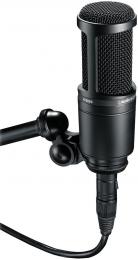

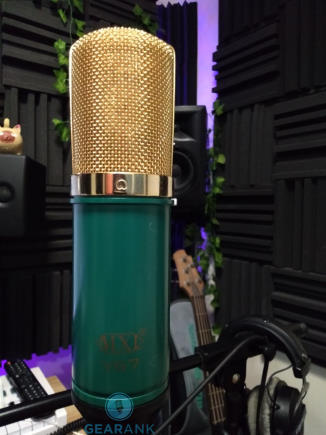
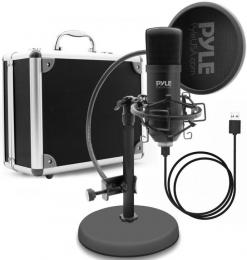
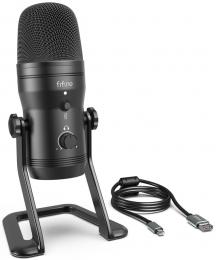
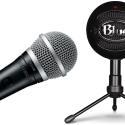
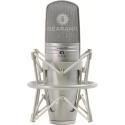
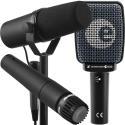
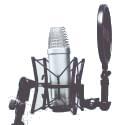
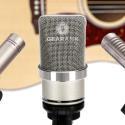
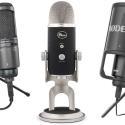
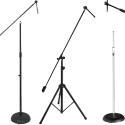
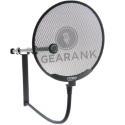
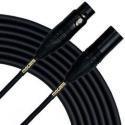
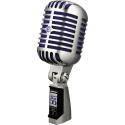


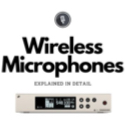
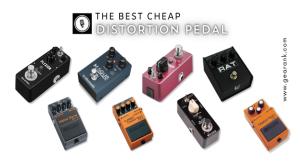
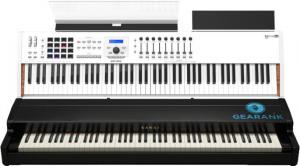
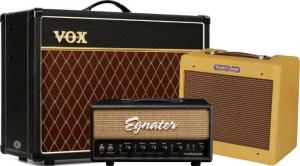
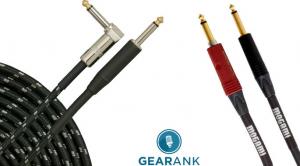
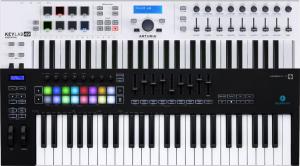
Comments
We have removed the AKG P120
Submitted by Jason Horton on
We have removed the AKG P120 from the recommended list above due to a price increase that made it ineligible.
Our August 2022 Edition
Submitted by Jason Horton on
Our August 2022 Edition removed the Rode NT-USB Mini from the recommended list due to a decline in ratings.
Publication of our March 2022
Submitted by Jason Horton on
Publication of our March 2022 Edition resulted in the following mics coming off the recommended list above, but you can still see our analysis of them:
The March 2021 edition
Submitted by Jason Horton on
The March 2021 edition resulted in the following mics coming off the recommended list above, but you can still see our analysis of them:
Our September 2020 Update
Submitted by Jason Horton on
Our September 2020 Update resulted in the following mics coming off the recommended list above, but you can still see our analysis of them:
As a result of our October
Submitted by Jason Horton on
As a result of our October 2019 update the following mics came off our recommended list above, but you can still read our analysis of them:
What's interesting is that 6
Submitted by Stu (not verified) on
What's interesting is that 6 months later, the MXG is no longer made and those that do stock it want considerably more than $100 (you're looking more like $200)
How come the AT2020 fell off the list? it's still regarded as the "Go To" but I'm looking for a mic with a bit more warmth (I have a fairly high-pitched thin voice for a bloke).
Love that for once the lower
Submitted by joe (not verified) on
Love that for once the lower-end mics are getting their due somewhere. Be nice to see an update on this article...also I suggest (to the author and others) to check out the Behringer C1 and MXL 67, both in the $50-60 range.
Thanks for that - when I saw
Submitted by Jason Horton on
Thanks for that - when I saw your post I also wondered why we didn't have the MXL V67G recommended above and when I looked into it I found there was a glitch in our database which I've now fixed. There is a good chance that one or both these mics will make it onto our recommended list when we next update this guide.
Here's a really, REALLY, good
Submitted by Herald (not verified) on
Here's a really, REALLY, good microphone to start with. Neewer NW700
do i need to buy the power
Submitted by jason b (not verified) on
do i need to buy the power supply? can you tell me if the mic is still good with no power supply?
A great list! thank you! I
Submitted by Megan (not verified) on
A great list! thank you! I used Blue Microphones Snowball and was satisfied a lot! Has anybody tried M-Audio Nova? My friend advised me to buy it because of its benefits.
There's nothing wrong with
Submitted by Jason Horton on
There's nothing wrong with the M-Audio Nova but it's out of production and no longer sold by most of the major online music gear retailers - M-Audio removed it from their own website store back in 2015.